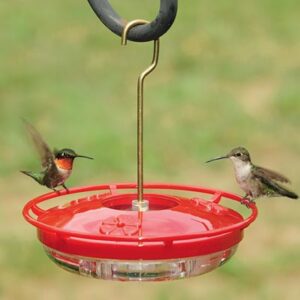 Beside a rural road where I like to walk sits a small, tidy house that overlooks the Falling Water River. Used to be, in the mornings, the house gave off the unmistakable and wonderful odor of bacon frying. That’s not true anymore. I don’t know whether the previous occupants moved away or if they simply quit frying bacon.
Beside a rural road where I like to walk sits a small, tidy house that overlooks the Falling Water River. Used to be, in the mornings, the house gave off the unmistakable and wonderful odor of bacon frying. That’s not true anymore. I don’t know whether the previous occupants moved away or if they simply quit frying bacon.
What I do know is that whoever lives there now likes hummingbirds, because a quart-sized feeder has hung on the front porch since early spring. Now, that feeder is working alive with hummers, stoking up for the long flight to Brazil or wherever it is they move to when it’s cold in the USA.
Just last week, because of that swarm of hummingbirds, I changed my mind about hanging a feeder.
For more years than I can count, I’ve fed hummingbirds from many styles of feeders. Many of them were upside down bottles screwed into a red well with feeding ports fashioned after yellow flowers. Some were delicate glass orbs with a single spout, lovely to look at but not all that great at actually doing their job. My favorites have always been the flat flying saucer-style feeders, partly because they have perches but also because they’re easy to clean and fill.
When I adopted rescue-dog Kamala three years ago, I never anticipated that the four-foot-tall, wood-rail fence that ran along my back sidewalk wouldn’t contain her, even with flower boxes atop it that added a little extra height. Kamala could, and did, leap that fence with ease. She didn’t even need a running start. So I hired a fence company to modify it with tall chain link. The six-foot fence keeps Kamala in, but it’s ugly. So ugly that I now refer to that part of my yard as Brushy Mountain Prison, even though the flower boxes—overflowing with red and white periwinkles–remain.
The chain link fence fills the spot where I’d always hung my hummingbird feeders. So, for the past few summers, the feeders have remained in a box in my storage room.
I was certain that hummingbirds would visit my yard anyway, filled as it is with daisies and black-eyed Susans and zinnias and bee balm and butterfly bush and butterfly weed and Rose of Sharon, not to mention red and white periwinkles. And they do, all spring and summer long. But the birds show up only one or two at a time. Never in swarms, even as autumn approaches.
So when I saw dozens of hummers at the used-to-smell-like-bacon house, I went home and dusted off my flying-saucer feeder with the built-in ant moat. I filled it with nectar (one-fourth cup sugar stirred into one cup water, no food coloring) and hung it on a hook way out by the woods.
To see the feeder from the window over my kitchen sink, I needed my newest pair of eyeglasses. Binoculars would have been better. Happily, by the time I found said glasses, the hummingbirds had found the feeder. First there was one. Then two. Then three, all so busy dive bombing each other that no one was lapping up much nectar. No matter. I was helping the hummingbirds get ready for their long intercontinental flight and that’s what counted.
As I write this column, summer temperatures are still with us during the daytime and the hummingbirds are still here. I know that will change all too soon. In a way we humans will likely never understand, the shorter days will urge the birds to move south. But I’ll keep the feeder hung and the nectar fresh until I feel certain they’re all gone from these parts.
Then I’ll begin counting down the days until we reach the vernal equinox and our little friends return. You can bet there’ll be a feeder full of fresh sugar water hanging in my Brushy Mountain Prison back yard to welcome them.
(September 30, 2023)